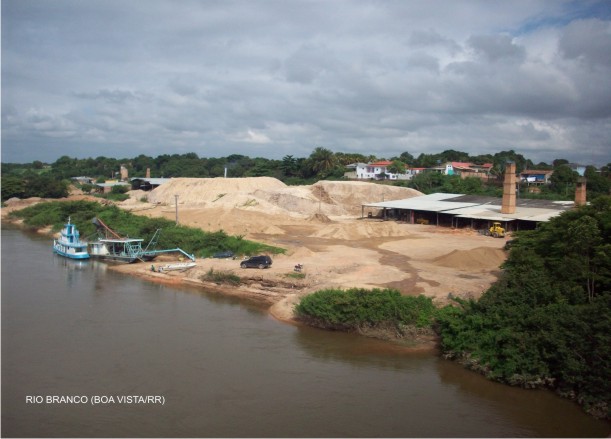IDENTIFICAR, SITUAR Y LOCALIZAR: UN RETO PARA LA ENSEÑANZA DE LA GEOGRAFÍA? (Identify, situate and locate: a challenge for teaching Geography?)
DOI:
https://doi.org/10.5654/acta.v4i7.366Resumo
La enseñanza de la Geografía, parte de la localización por considerarla un principio geográfico por excelencia, mediante el cual se trata de analizar las condiciones y cualidades de un hecho geográfico en cuanto al lugar que ocupa y a su situación para comprender su naturaleza. Naturalmente que constituye un paso inicial pero necesario en el amplio proceso de generar análisis integrales y críticos sobre la dinámica de cualquier espacio geográfico; a partir de esta premisa y mediante un estudio exploratorio interpretativo, se diagnosticó la habilidad de utilizar básica y adecuadamente la localización – en su fase de identificación y situación – para el desarrollo de contenidos de la asignatura Geografía de Venezuela en una muestra de 75 estudiantes del III semestre de Educación en Geografía e Historia y del V semestre de Educación Rural en el Instituto Pedagógico Rural “Gervasio Rubio” de la Universidad Pedagógica Experimental Libertador (UPEL). En este sentido, se valoraron los trabajos de los estudiantes realizados en talleres de aula con el mapa de Venezuela y del Estado Táchira, entidad fronteriza ubicada al suroeste del país, en la que se emplaza el Instituto Pedagógico Rural “Gervasio Rubio”. Los resultados, evidencian dificultades para identificar, situar y representar a escala nacional y regional (Venezuela y estado Táchira) elementos característicos del paisaje tales como principales ciudades, ríos, cordilleras, actividades económicas, etc.., por tanto se puede esperar dificultades para abordar conceptos geográficos generales en la formación de estos estudiantes, y posteriormente, como futuros docentes, en el ejercicio de la docencia. Esta problemática guarda estrecha relación con prácticas tradicionales y descriptivas de la geografía en los diferentes niveles del sistema educativo. Palabras-clave: enseñanza-aprendizaje; geografía; principios y métodos de la geografía. ABSTRACT The teaching of Geography starts with localization, as it is considered a geographic principal par excellence, through which the intention is to analyze conditions and qualities of a geographical fact with regards to the place it occupies and its situation, in order to comprehend its nature. It is naturally a first step, but a necessary one, in the broader process of creating integral and critical analyses of the dynamics of any geographical space; from this premise and by means of an interpretative and exploratory study, we diagnosed the ability to use localization basically and adequately - in its identification and situation phase - for the content development of the “Geography of Venezuela” subject material, by using a sample of 75 students from the third semester of the Education in Geography and History course and the fifth semester of the Rural Education course at the “Gervasio Rubio” Rural Pedagogic Institute of the Libetador Experimental Pedagogic University (UPEL), in Venezuela. Accordingly, we evaluate the work that students carried out in classroom workshops with a map of Venezuela and the state of Táchira, a border region located in the southeast of the country, where the “Gervasio Rubio” Pedagogic Institute is located. The results show the difficulties of identifying, situating and representing characteristic topographical elements on a national and regional scale (Venezuela and the state of Táchira, respectively), such as: towns, rivers, ranges, economic activities, etc. Therefore, we can expect difficulties to infuse geographical concepts into the education of these students and, then, as future academicians, in the execution of their teaching of future students. This issue has a close relationship with the traditional and descriptive practices of Geography at the different levels of the educational system. Keywords: teaching and learning; Geography; methods and principals of Geography. DOI: 10.5654/actageo2010.0407.0011Downloads
Downloads
Publicado
Edição
Seção
Licença
PORTUGUÊS A Revista ACTA Geográfica deterá os direitos autorais dos trabalhos publicados. Os direitos referem-se a publicação do trabalho em qualquer parte do mundo, incluindo os direitos às renovações, expansões e disseminações da contribuição, bem como outros direitos subsidiários. Os(as) autores(as) têm permissão para a publicação da contribuição em outro meio, impresso ou digital, em português ou em tradução, desde que os devidos créditos sejam dados à Revista ACTA Geográfica.
ENGLISH ACTA Geográfica Journal will obtain the auctorial rights for all published texts. This also implies that the text can be published anywhere in the world, including all rights on renewal, expansion and dissemination of the contribution, as well as other subsidiary rights. The author’s get permission to publish the contribution in other medias, printed or digital, itmay be in Portuguese or translation, since the publication is credited to ACTA Geográfica Journal.

Este obra está licenciado com uma Licença Creative Commons Atribuição 4.0 Internacional.










